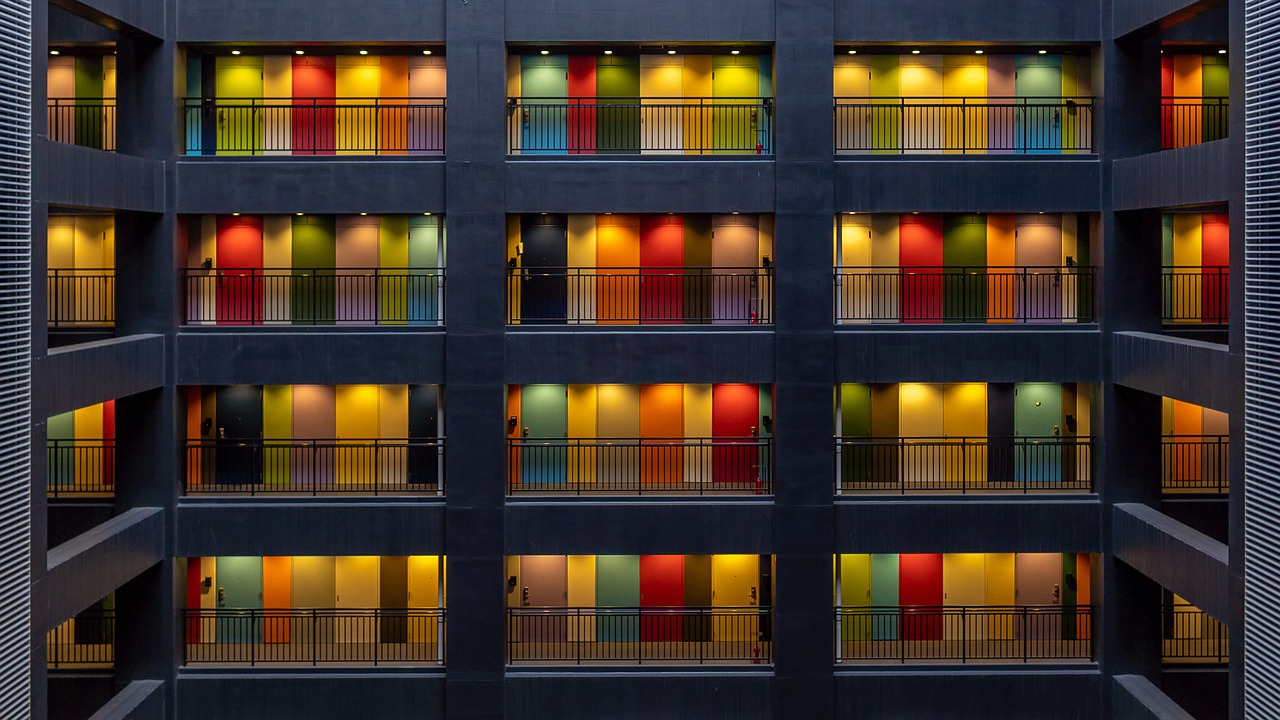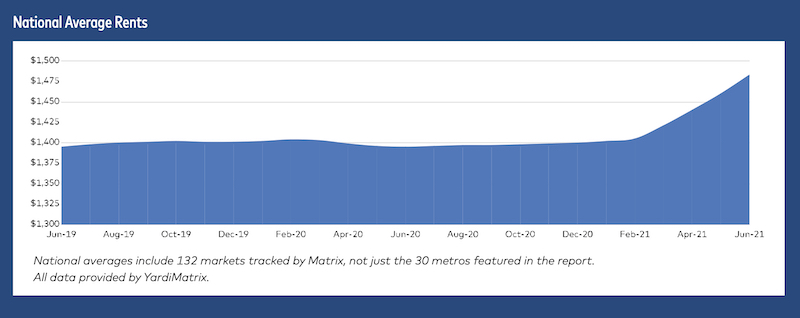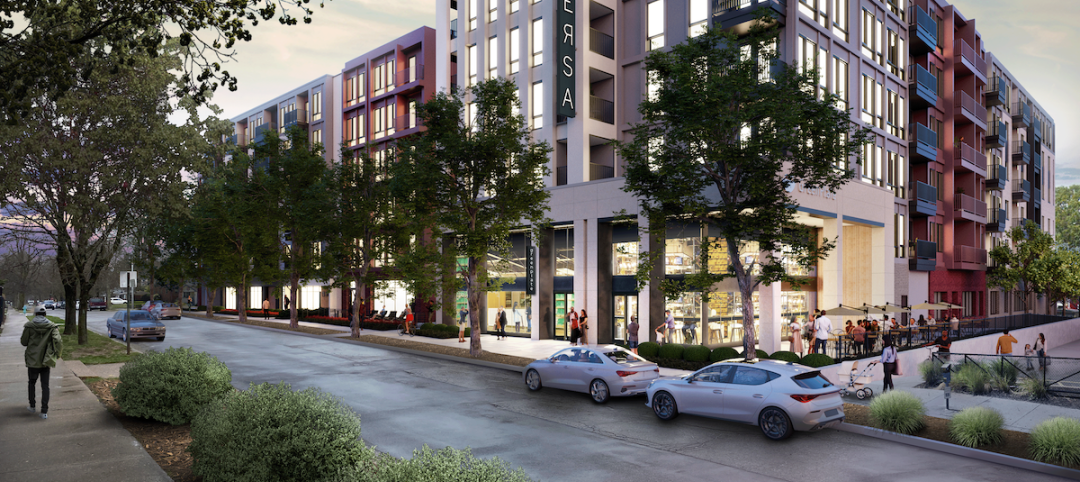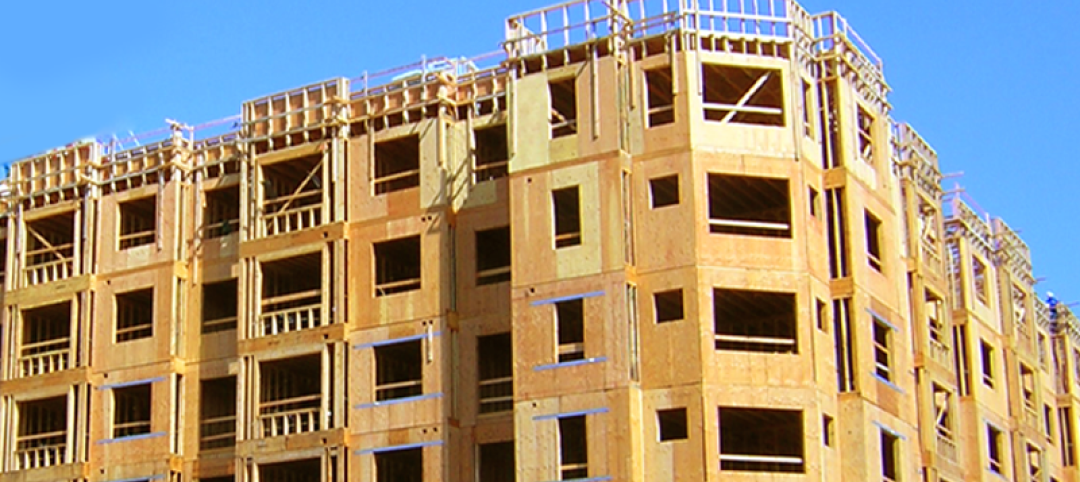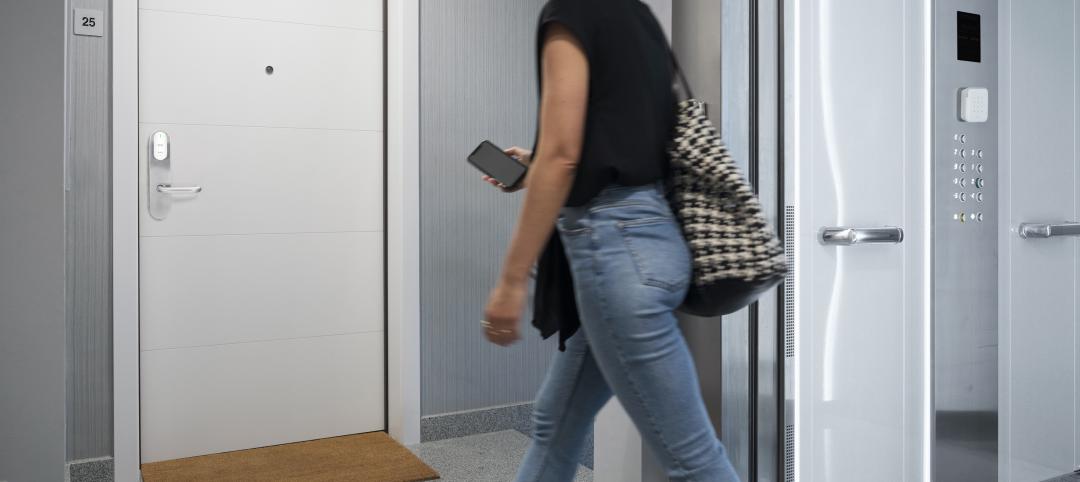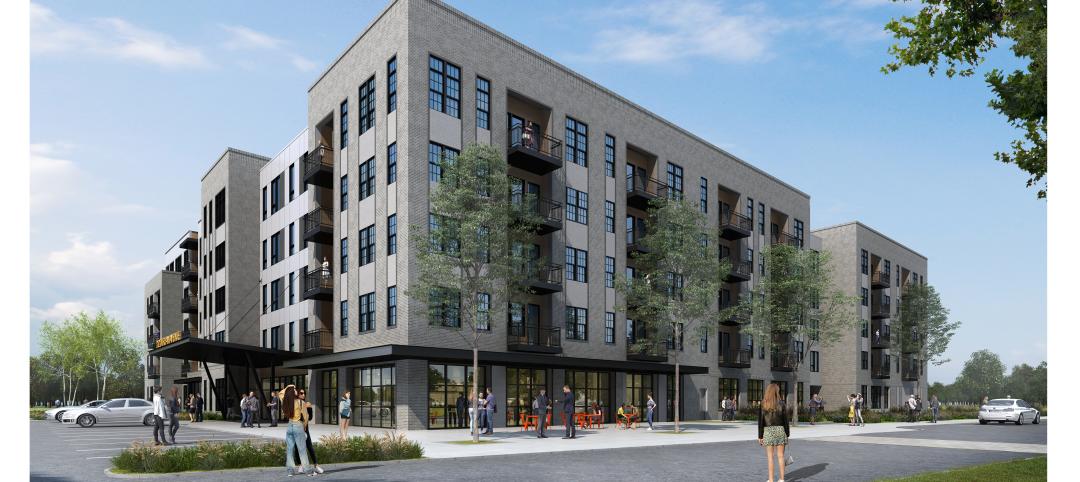Multifamily asking rents jumped an average of 6.3% year-over-year in June, the largest leap ever recorded by Yardi Matrix, a leading industry data tracker. The national average apartment rent increased $23 last month to $1,482, another record, and single-family home rents were up 11% year-over-year.
“These are the largest year-over-year and monthly increases in the history of our data set,” said Jeff Adler, vice president of Yardi Matrix. Analysts point to increased household savings and government stimulus funding as factors that have kept the multifamily industry stable during the pandemic period, and now able to rebound as the economy improves.
The newly released data is an economic indicator of post-pandemic recovery across the U.S. The largest increases were documented in the lifestyle apartment sector. Renters are also now returning to many gateway markets that saw outbound migration for most of the last year. A supercharged housing market is also pricing out some potential buyers, leading residents to remain in apartments.
“Rent growth will not be able to continue at these levels indefinitely, but conditions for above-average growth are likely to persist for months,” Adler said. The increases reflect growth in what landlords are asking for unleased apartments. Renters renewing leases may also be seeing increased rents, but at lower levels.
Migration is pushing up rents in Southwest and Southeast metros like Phoenix (17.0%), Tampa and California’s Inland Empire (both 15.1%), Las Vegas (14.6%) and Atlanta (13.3%). These metros were lower cost compared to larger gateway metros.
Some takeaways from the Yardi Matrix report:
• Multifamily asking rents increased by 6.3% on a year-over-year basis in June, the largest YoY increase in the history of our data set. Out of our top 30 markets, 27 had positive YoY rent growth.
• Rents grew an astonishing $23 in June to $1,482—another record-breaking increase. Lifestyle rents are growing at a faster pace than Renter-by-Necessity rents, something we have not seen since 2011 and another sign of a hot market.
• Phoenix (17.0%), Tampa and the Inland Empire (both 15.1%) topped the list with unprecedented year-over-year rent growth. Nine of the top 30 markets had double-digit YoY rent growth in June, driven by strong migration to these metros.
• Year-over-year Lifestyle rents (7.2%) grew faster than Renter-by-Necessity rents (5.8%) in June for the first time since 2011. Renters have benefited from increased government support, strong wage growth and increased
• Single-family (Built-to-Rent) rents grew even faster, at an 11% year-over-year pace
• Rents increased nationally by 1.6% in June on a month-over-month basis. For the third month in a row, all 30 metros had positive month-over-month rent growth.
• Tampa, Phoenix (both 2.5%), Austin (2.4%), and Miami (2.3%) had the strongest MoM gains.
Related Stories
Multifamily Housing | May 30, 2023
Milhaus, Gershman Partners, and Citimark close on $70 million multifamily development in Indy
Versa will bring 233 studio and one- and two-bedroom apartments to Indianapolis's $271 million, Class-A Broad Ripple Village development enterprise.
Multifamily Housing | May 23, 2023
One out of three office buildings in largest U.S. cities are suitable for residential conversion
Roughly one in three office buildings in the largest U.S. cities are well suited to be converted to multifamily residential properties, according to a study by global real estate firm Avison Young. Some 6,206 buildings across 10 U.S. cities present viable opportunities for conversion to residential use.
Multifamily Housing | May 19, 2023
Biden administration beefs up energy efficiency standards on new federally funded housing
The Biden Administration recently moved to require more stringent energy efficiency standards on federally funded housing projects. Developers building homes with taxpayer funds will have to construct to the International Energy Conservation Code (IECC) 2021 for low-density housing and American Society of Heating, Refrigerating and Air-Conditioning Engineers ASHRAE 90.1 for multi-family projects.
Sponsored | Multifamily Housing | May 19, 2023
Shear Wall Selection for Wood-Framed Buildings
From wall bracing to FTAO, there are many ways to secure the walls of a building. Learn how to evaluate which method is best for a project.
Sponsored | Multifamily Housing | May 17, 2023
The Key To Multifamily Access Control — Consistent Resident Experiences
Explore the challenges of multifamily access control and discover the key to consistent user experiences with a resident-first approach and open platforms.
Affordable Housing | May 17, 2023
Affordable housing advocates push for community-owned homes over investment properties
Panelists participating in a recent webinar hosted by the Urban Institute discussed various actions that could help alleviate the nation’s affordable housing crisis. Among the possible remedies: inclusionary zoning policies, various reforms to increase local affordable housing stock, and fees on new development to offset the impact on public infrastructure.
Multifamily Housing | May 16, 2023
Legislators aim to make office-to-housing conversions easier
Lawmakers around the country are looking for ways to spur conversions of office space to residential use.cSuch projects come with challenges such as inadequate plumbing, not enough exterior-facing windows, and footprints that don’t easily lend themselves to residential use. These conditions raise the cost for developers.
Multifamily Housing | May 12, 2023
An industrial ‘eyesore’ is getting new life as an apartment complex
The project, in Metuchen, N.J., includes significant improvements to a nearby wildlife preserve.
Senior Living Design | May 8, 2023
Seattle senior living community aims to be world’s first to achieve Living Building Challenge designation
Aegis Living Lake Union in Seattle is the world’s first assisted living community designed to meet the rigorous Living Building Challenge certification. Completed in 2022, the Ankrom Moisan-designed, 70,000 sf-building is fully electrified. All commercial dryers, domestic hot water, and kitchen equipment are powered by electricity in lieu of gas, which reduces the facility’s carbon footprint.


